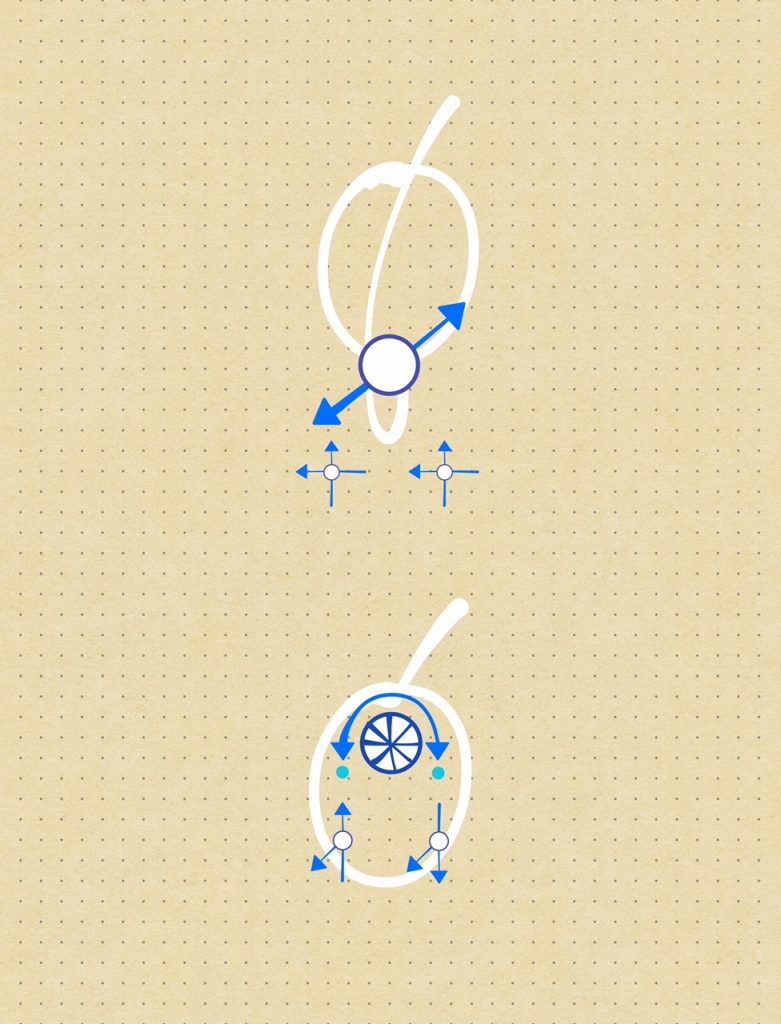The AXIS SYLLABUS NOTATION SYSTEM
In collaboration with Frey Faust and the Axis Syllabus Research Meshwork
Read more and get the Book >>>
The Axis Syllabus Notation System was invented by Frey Faust (The Axis Syllabus). We are both co-authors of its upgraded 3rd edition.
The ASNS is a universal writing system for describing, documenting, evaluating and composing human movement patterns and possibilities. It is a movement learning tool through analysis, documentation and creative composition. It allows the user to focus on specifics such as directionality, support systems, anatomical movements, muscular activity, mechanical forces, timing, and so on. As a process oriented self-educational tool, it can facilitate the enhancement of movement skills through the acquisition of analytical competences. If used strategically, it serves as a complement to learning through imitation.
Scientific, anatomical and bio-mechanical information from the Axis Syllabus archive is symbolized and sublimated by the Axis Syllabus Notation System. We will attentively watch, record, analyze, identify, name and document movement patterns using appropriate terminology and coding symbols.

Vocabulary: Curved trajectory arrows; a curved trajectory arrow indicates movement on the frontal plane by default; if a horizontal or vertical stroke is added, it represents the horizontal or vertical axis, meaning the trajectory is happening on the transverse or sagittal plane; clock numbers indicate more specifically where the movement begins or ends; a stoke or double stroke added at the point of the arrow indicates one or two circumductions; Note: Different vectors bring us into distinctly different situations.

Curved pathways, helix, spiral motion; Combination of Trajectory arrows and Vector arrows; Trajectory arrow: one and a three quarter circle on the transverse plane around the vertical axis, from right to posterior over the the left to anterior; radius decreases: from large range to small range; Vector arrow indicates a depression; both arrows apply to the fingertips of the right hand, describing a spiraling pathway downwards; rest is open to interpretation

Interpretable scores; Body part: left scapular; Spin arrow (S-arrows): rotation in angular motion,can pierce the body part symbol at any location; Top: counterclockwise rotation on frontal plane around the sagittal axis piercing approximately the center of the left scapular; Central: counterclockwise rotation of the left scapular on frontal plane around the sagittal axis near shoulder joint; Bottom: clockwise rotation of the left scapular on frontal plane around sagittal axis located at lower edge of the scapular; We can assume that the whole body engages in the process. Note: The ASNS can be used for movement documentation, choreography, interpretable scores, performance structures, creative processes, analysis and detailed diagnosis.


Current muscular activity symbols from top down: concentric contraction, eccentric contraction, isotonic contraction, co-contraction, inhibition of contraction, stretch, elastic recoil, lead and lag; Note: Specificity about where and which kind of contraction is taking place allows a more detailed, causal understanding of how and why we can aggregate body parts into larger objects, how we loosen or tighten tensegrity, what kinds of elastic or sequential movement responses we can expect.

Ongoing research excerpt: the ASNS allows for documentation of articular micro movements, as well as enhanced trajectories of proximal and peripheral body parts in space; Body part symbols: head and neck, head; Top: spinal motion center, occiput + C1-C3; Bottom: event node placed on forehead.

Body part: right foot; Loading zone: front foot, plantar side, partial load; Vector arrows: to the left and down; Spin arrow: 270° clockwise; Note: the ASNS facilitates relevant questioning, it can nourish a structured feedback loop for self evaluation and teaching.

France, 2019

ASNS vocabulary excerpt: spinal mechanics, default symbols, combination of trajectories; Explicit symbols: anatomical center, motoric masses, Spin arrows, Vector arrows, Curved trajectory arrows; Implicit processes: compensation, osculation, undulation; Note: The motoric mass initiates the movement process.

ASNS timeline: icons are disposed like musical notes; Movement literacy and linguistic literacy: Being specific and accurate allows you to negotiate your interests, navigate conflict or collaborate creatively. Mastering the grammar, vocabulary and syntax of that language makes a difference, structure, timing, tone, context can decisively change the meaning or the outcome of the negotiation; Backward roll.

Axial body: head and neck, shoulder girdle and torso, abdomen and pelvis; Motion centers of the spine: occiput and C1-C3, C5-C7, T2-T5, T8-T12 (anatomical center), L2-S1.
For more references visit and subscribe here: